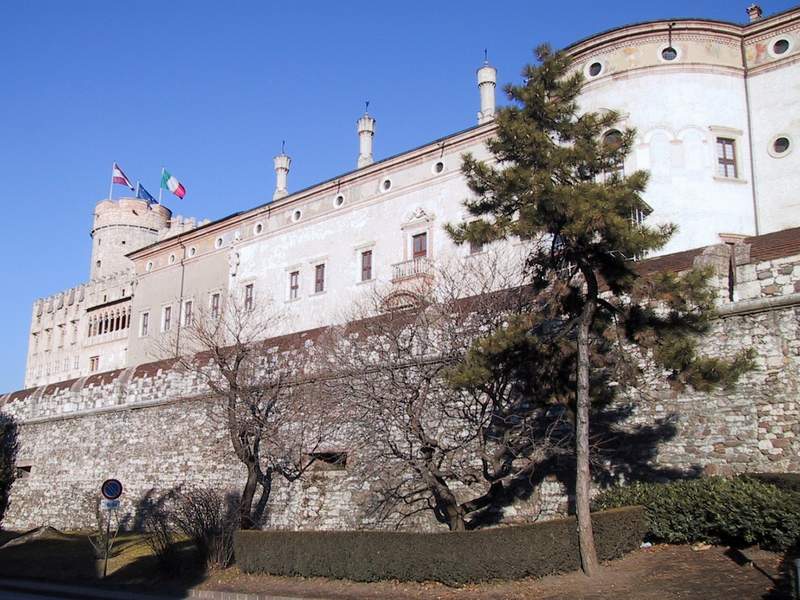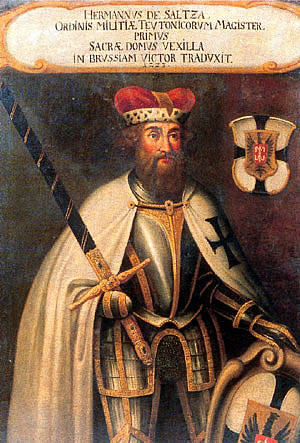|
Lana, South Tyrol
Lana (; ) is a ''comune'' (municipality) in South Tyrol in northern Italy. It is situated in the Etschtal (Etsch Valley) between Bolzano and Merano and at the entrance to the Ultental. The population rose to 12,566 in 2020. It is one of the three municipalities of South Tyrol whose name remained unchanged by the early 20th-century renaming programme which aimed at replacing mostly German place names with Italianised versions, the other two being Gais and Plaus. History Coat-of-arms The emblem displays argent, a Teutonic cross sable, and a lion rampant gules over all. The lion is taken from the arms of the Counts of Brandis who played a role in the development of the village. The emblem was adopted in 1967. Society Linguistic distribution According to the 2011 census, 91.84% of Lana's population speak German, 7.90% Italian, and 0.26% Ladin as first language. Demographic evolution Colors= id:lightgrey value:gray(0.9) id:darkgrey value:gray(0.8) id:sfondo va ... [...More Info...] [...Related Items...] OR: [Wikipedia] [Google] [Baidu] |
Trentino-Alto Adige/Südtirol
it, Trentino (man) it, Trentina (woman) or it, Altoatesino (man) it, Altoatesina (woman) or it, Sudtirolesegerman: Südtiroler (man)german: Südtirolerin (woman) , population_note = , population_blank1_title = Official languages , population_blank1 = Italian German (South Tyrol) , population_blank2_title = Other languages , population_blank2 = in some municipalities: Ladin MochenoCimbrian , demographics_type1 = Citizenship , demographics1_footnotes = , demographics1_title1 = Italian , demographics1_info1 = 93% , timezone1 = CET , utc_offset1 = +1 , timezone1_DST = CEST , utc_offset1_DST = +2 , postal_code_type = , postal_code = , area_code_type = ISO 3166 code , area_code = IT-32 , blank_name_sec1 ... [...More Info...] [...Related Items...] OR: [Wikipedia] [Google] [Baidu] |
Sable (heraldry)
In heraldry, sable () is the tincture black, and belongs to the class of dark tinctures, called "colours". In engravings and line drawings, it is sometimes depicted as a region of crossed horizontal and vertical lines, or else marked with ''sa.'' as an abbreviation. The name derives from the black fur of the sable, a species of marten. Poetic meanings Centuries ago, arms were often described poetically and the tinctures were connected to different gemstones, flowers and heavenly bodies. Sable usually represented the following: * Of jewels, the diamond * Of heavenly bodies, Saturn * Of flowers, the herb nightshade, in these circumstances also called dwal Gallery File:Arms of Dalzell, Earl of Carnwath.svg, Arms of Dalziel family of Scotland File:Arms of the Foljambe family of Walton.png, Arms of the Foljambe family of Walton, Osberton and Aldwark. File:Blason fam nl van Borssele de Zuylen 1.svg, Coat of arms of Frank II van Borselen. File:DEU Hueckelhoven COA.svg, Coat of arm ... [...More Info...] [...Related Items...] OR: [Wikipedia] [Google] [Baidu] |
Armin Zöggeler
Armin Zöggeler OMRI (born 4 January 1974) is a retired Italian luger and double Olympic champion. He is one of the most successful men in the sport, nicknamed ''Il Cannibale'' ("The Cannibal"), for his notable series of victories, or ''The Iceblood Champion'', for his always cold, rational approach to the races. Fellow luger Tucker West described Zöggeler as the sport's equivalent of Michael Jordan. At the Winter Olympic Games, Zöggeler has won six medals in six consecutive Olympics – and this is a record in sport. He also has sixteen medals at the FIL World Luge Championships. At the FIL European Luge Championships, Zöggeler has earned eighteen medals. In June 2019 he was inducted in the FIL ''Hall of Fame''. Personal life Zöggeler was born in Meran, South Tyrol, into a farming family. A Carabiniere by profession, he began to luge at a very young age, over natural tracks. He won the junior World Cup when he was 14, and made his debut with the Italian national team at t ... [...More Info...] [...Related Items...] OR: [Wikipedia] [Google] [Baidu] |
Zuegg
Karl Zuegg (28 February 1914 – 26 December 2005) was an Italian entrepreneur from Lana Lana may refer to: *Lana (given name) *Francesco Lana de Terzi (1631–1687), Italian Jesuit priest and scientist *Lana (wrestler), professional wrestler and pro wrestling manager *''Wild Energy. Lana'', a 2006 Ukrainian fantasy novel Sciences * ... in South Tyrol. He was the managing director of the Lana fruit juice and jam company Zuegg, between 1940 and 1986. References External links Zuegg homepage 1914 births 2005 deaths People from Lana, South Tyrol 20th-century Italian businesspeople {{italy-business-bio-stub ... [...More Info...] [...Related Items...] OR: [Wikipedia] [Google] [Baidu] |
Karl Zuegg
Karl Zuegg (28 February 1914 – 26 December 2005) was an Italian entrepreneur from Lana in South Tyrol. He was the managing director of the Lana fruit juice and jam company Zuegg Karl Zuegg (28 February 1914 – 26 December 2005) was an Italian entrepreneur from Lana Lana may refer to: *Lana (given name) *Francesco Lana de Terzi (1631–1687), Italian Jesuit priest and scientist *Lana (wrestler), professional wrestler and ..., between 1940 and 1986. References External links Zuegg homepage 1914 births 2005 deaths People from Lana, South Tyrol 20th-century Italian businesspeople {{italy-business-bio-stub ... [...More Info...] [...Related Items...] OR: [Wikipedia] [Google] [Baidu] |
Chloroquine
Chloroquine is a medication primarily used to prevent and treat malaria in areas where malaria remains sensitive to its effects. Certain types of malaria, resistant strains, and complicated cases typically require different or additional medication. Chloroquine is also occasionally used for amebiasis that is occurring outside the intestines, rheumatoid arthritis, and lupus erythematosus. While it has not been formally studied in pregnancy, it appears safe. It was studied to treat COVID-19 early in the pandemic, but these studies were largely halted in the summer of 2020, and is not recommended for this purpose. It is taken by mouth. Common side effects include muscle problems, loss of appetite, diarrhea, and skin rash. Serious side effects include problems with vision, muscle damage, seizures, and low blood cell levels. Chloroquine is a member of the drug class 4-aminoquinoline. As an antimalarial, it works against the asexual form of the malaria parasite in the stage of ... [...More Info...] [...Related Items...] OR: [Wikipedia] [Google] [Baidu] |
Hans Andersag
Johann Andersag (better known as Hans Andersag) was a scientist born on February 16, 1902, in Lana, Tyrol, Austria-Hungary (now South Tyrol, Italy), and died August 10, 1955, in Wuppertal, Germany, following bronchial cancer. While working for Bayer AG, he discovered chloroquine, the active ingredient in the malaria drug Resochin. He also first synthesized vitamin B6 with Richard Kuhn, Kurt Westphal, and Gerhardt Wendt. He was awarded a doctorate degree for his dissertation "Synthese des natürlichen Koproporphyrins sowie zweier damit isomerer Porphyrine" at the Technical University Munich on September 9, 1927. He was married to Else Andersag (née Nouvortne). The couple lived with their three daughters Christel, Marianne and Renate on Jaegerhofstrasse 44 in Wuppertal-Elberfeld. Hans Andersag's grave and gravestone are located at the "Alter Lutherischer Friedhof an der Hochstrasse" in Wuppertal-Elberfeld. See also *History of malaria The history of malaria extendes from its p ... [...More Info...] [...Related Items...] OR: [Wikipedia] [Google] [Baidu] |
Grand Master Of The Teutonic Order
The Grand Master of the Teutonic Order (german: Hochmeister des Deutschen Ordens; la, Magister generalis Ordo Teutonicus) is the supreme head of the Teutonic Order. It is equivalent to the Grand master (order), grand master of other Military order (religious society), military orders and the superior general in non-military Religious order (Catholic), Roman Catholic religious orders. ''Hochmeister'', literally "high master", is only used in reference to the Teutonic Order, as ''Großmeister'' ("grand master") is used in German to refer to the leaders of other orders of knighthood. An early version of the full title in Latin was ''Magister Hospitalis Sanctae Mariae Alemanni, Alemannorum Hierosolymitani''. Since 1216, the full title ''Magister Hospitalis Domus Sanctae Mariae Teutons, Teutonicorum Hierosolymitani'' ("Master of the Hospital House of the Blessed Virgin Mary of the Germans of Jerusalem") was used. The offices of ''Hochmeister'' and ''Deutschmeister'' (''Magister Ge ... [...More Info...] [...Related Items...] OR: [Wikipedia] [Google] [Baidu] |
Robert Schälzky
The Grand Master of the Teutonic Order (german: Hochmeister des Deutschen Ordens; la, Magister generalis Ordo Teutonicus) is the supreme head of the Teutonic Order. It is equivalent to the grand master of other military orders and the superior general in non-military Roman Catholic religious orders. ''Hochmeister'', literally "high master", is only used in reference to the Teutonic Order, as ''Großmeister'' ("grand master") is used in German to refer to the leaders of other orders of knighthood. An early version of the full title in Latin was ''Magister Hospitalis Sanctae Mariae Alemannorum Hierosolymitani''. Since 1216, the full title ''Magister Hospitalis Domus Sanctae Mariae Teutonicorum Hierosolymitani'' ("Master of the Hospital House of the Blessed Virgin Mary of the Germans of Jerusalem") was used. The offices of ''Hochmeister'' and ''Deutschmeister'' (''Magister Germaniae'') were united in 1525. The title of ''Magister Germaniae'' had been introduced in 1219 as th ... [...More Info...] [...Related Items...] OR: [Wikipedia] [Google] [Baidu] |
Joseph Ohrwalder
Father Joseph Ohrwalder (6 March 1856 Lana, South Tyrol - 8 August 1913 Omdurman/Sudan) Born in Lana, County of Tyrol in the Austro-Hungarian Empire Austria-Hungary, often referred to as the Austro-Hungarian Empire,, the Dual Monarchy, or Austria, was a constitutional monarchy and great power in Central Europe between 1867 and 1918. It was formed with the Austro-Hungarian Compromise of ..., Ohrwalder was a Roman Catholic priest, who was taken captive by the Mahdists in Sudan while working as a missionary there and escaped ten years later. The German manuscript of his travels was rendered into English by Francis Reginald Wingate from a sketchy translation. Wingate had helped him escape from Sudan. External links * * 1856 births 1913 deaths People from Lana, South Tyrol {{Sudan-stub ... [...More Info...] [...Related Items...] OR: [Wikipedia] [Google] [Baidu] |
Ladin Language
Ladin (, also ; autonym: , it, ladino; german: Ladinisch) is a Romance language of the Rhaeto-Romance subgroup, mainly spoken in the Dolomite Mountains in Northern Italy in the provinces of South Tyrol, Trentino, and Belluno, by the Ladin people. It exhibits similarities to Swiss Romansh and Friulian. The precise extension of the Ladin language area is a subject of scholarly debate. A more narrow perspective includes only the dialects of the valleys around the Sella group, while wider definitions comprise the dialects of adjacent valleys in the Province of Belluno and even dialects spoken in the northwestern Trentino. A standard variety of Ladin () has been developed by the Office for Ladin Language Planning as a common communication tool across the whole Ladin-speaking region. Geographic distribution Ladin is recognized as a minority language in 54 Italian municipalities belonging to the provinces of South Tyrol, Trentino and Belluno. It is not possible to as ... [...More Info...] [...Related Items...] OR: [Wikipedia] [Google] [Baidu] |
Italian Language
Italian (''italiano'' or ) is a Romance language of the Indo-European language family that evolved from the Vulgar Latin of the Roman Empire. Together with Sardinian, Italian is the least divergent language from Latin. Spoken by about 85 million people (2022), Italian is an official language in Italy, Switzerland ( Ticino and the Grisons), San Marino, and Vatican City. It has an official minority status in western Istria (Croatia and Slovenia). Italian is also spoken by large immigrant and expatriate communities in the Americas and Australia.Ethnologue report for language code:ita (Italy) – Gordon, Raymond G., Jr. (ed.), 2005. Ethnologue: Languages of the World, Fifteenth edition. Dallas, Tex.: SIL International. Online version ... [...More Info...] [...Related Items...] OR: [Wikipedia] [Google] [Baidu] |






